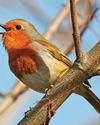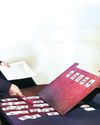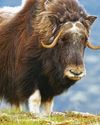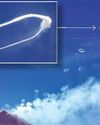
Imagine you’re walking down the sweet aisle at your local grocery store. You see flying saucers, sour gummies, Maltesers, Mars bars and so much more. Sure, at first glance – and bite – these sweets may taste, look, smell and feel different, but if you boil them all down (literally) they all have the same base ingredient: sugar. It is only when sugar mixes with science that it shapeshifts into your favourite sweets. So how are different candies made? Why do you crave them? Who is hard at work making the world taste so good? Let’s dive into the wild world of sweets to find out.
Candy chemistry
Candy-making is a lesson in chemistry – a type of science that studies how substances change when they react with each other. To make different sweets, candy makers (also known as “food engineers”) combine sugar, water and other ingredients – flavourings and gelatins (substances that form a stiff jelly) – and then bring them to a boil. Boiling the mixture causes a chemical reaction that changes the structure of sugar. Once that happens, the sugar mixture is ready to be cooled. It is the cooling process that determines what form the sugar will take. All candy can be sorted into two categories: crystalline or non-crystalline. Crystalline candies are continuously stirred as they cool, which makes smooth, easy-to chew sweets like fudge. Non-crystalline candies are usually more brittle-like sticks of rock and lollipops. The mixture is boiled at a much higher temperature, which gives it a hard glassy texture.
Sweet school
Bu hikaye The Week Junior Science+Nature UK dergisinin Issue 74 sayısından alınmıştır.
Start your 7-day Magzter GOLD free trial to access thousands of curated premium stories, and 8,500+ magazines and newspapers.
Already a subscriber ? Giriş Yap
Bu hikaye The Week Junior Science+Nature UK dergisinin Issue 74 sayısından alınmıştır.
Start your 7-day Magzter GOLD free trial to access thousands of curated premium stories, and 8,500+ magazines and newspapers.
Already a subscriber? Giriş Yap

SUGAR RUSH
Join the candy craze as Claire Karwowski studies the sugary science of sweets.

Wildlife watch
Stevie Derrick shows you what to spot in nature this month

The Sixth Sense
Could humans have more than five senses?

Catherine Heymans
Meet the starry-eyed astronomer who loves backyard stargazing.

WORLD OF WHIFFS
Stevie Derrick follows her nose to track down the world's grossest stinks and nastiest niffs.

Dogs can understand names of objects
Humans enjoy talking to their dogs. If you have a four-legged friend of your own, you might have taught them to respond to commands like \"sit\" and \"stay\".

Smoke rings in the sky
In April, videos were filmed of Mount Etna, a volcano on the Italian island of Sicily, puffing what looked like smoke rings into the sky.

Huge gold nugget found
A gold nugget that could be the largest ever found in England was recently put up for auction. Metal detectorist Richard Brock discovered the nugget on farmland during an organised expedition in Shropshire last year.

Evolutionary tree shows birds in a new light
Researchers have produced the most detailed evolutionary tree of birds ever.

The largest plane to ever fly
Take a first look at the mighty Radia WindRunner aircraft